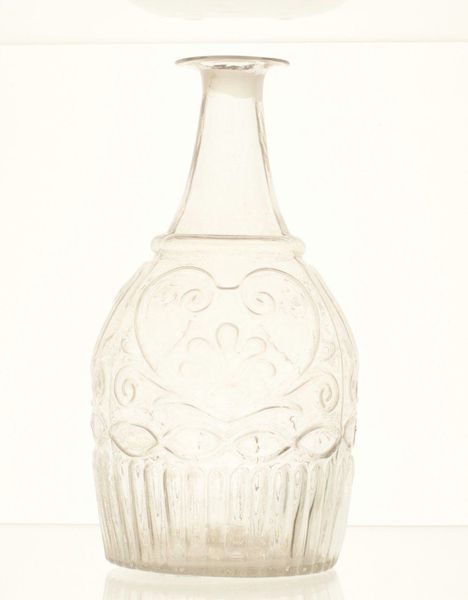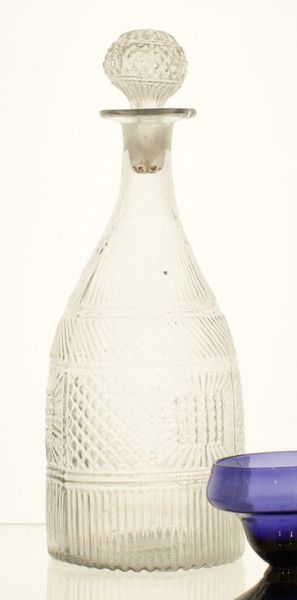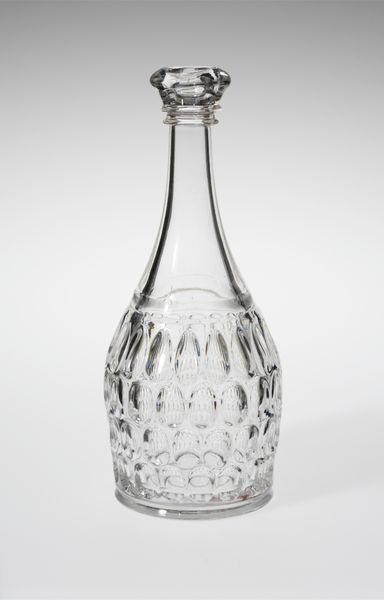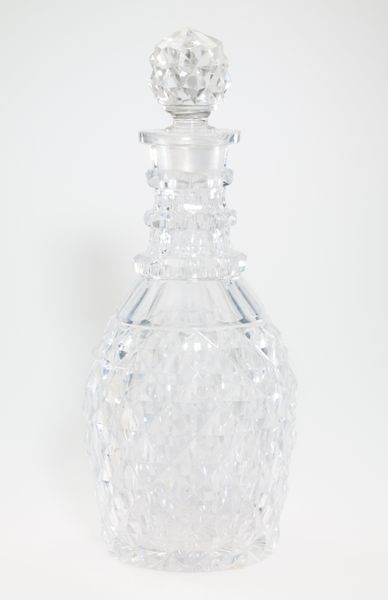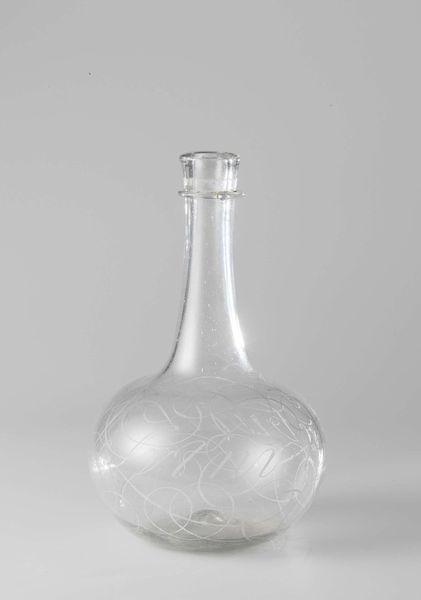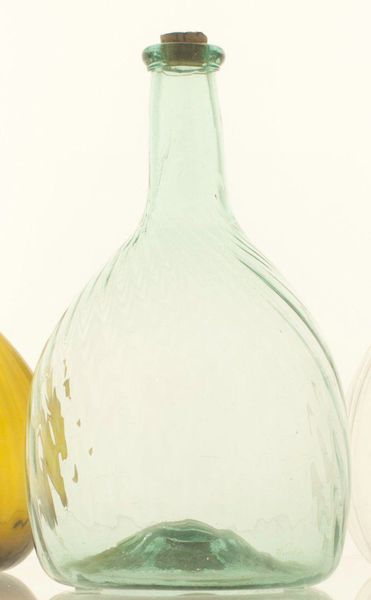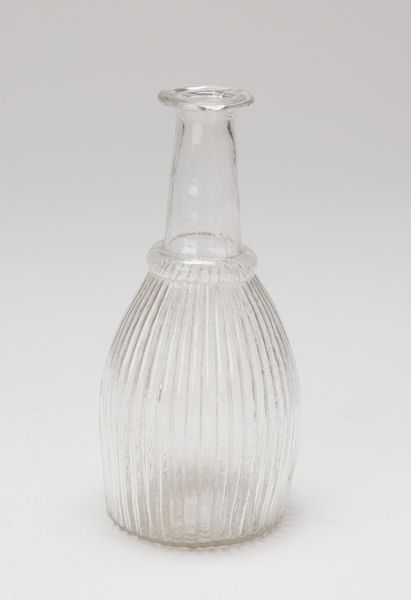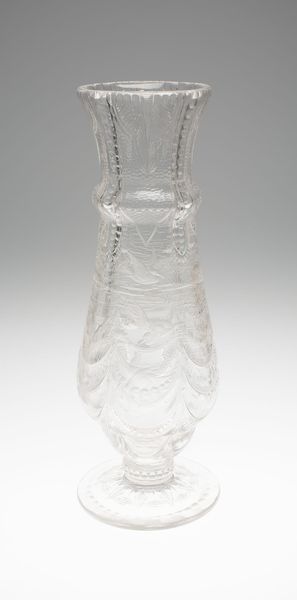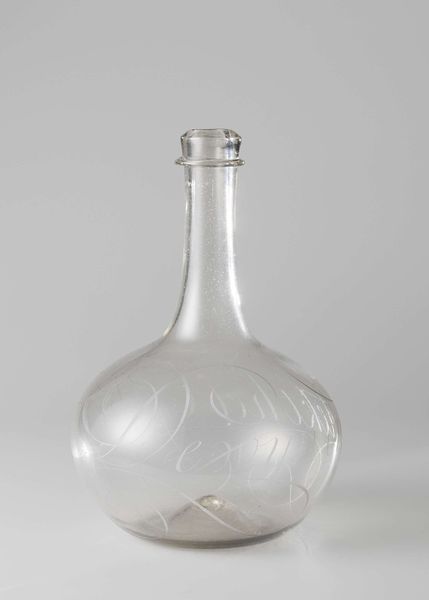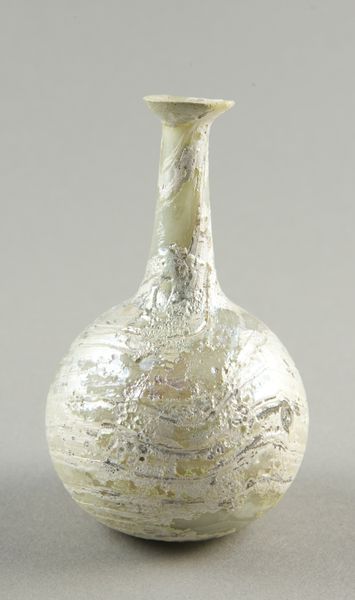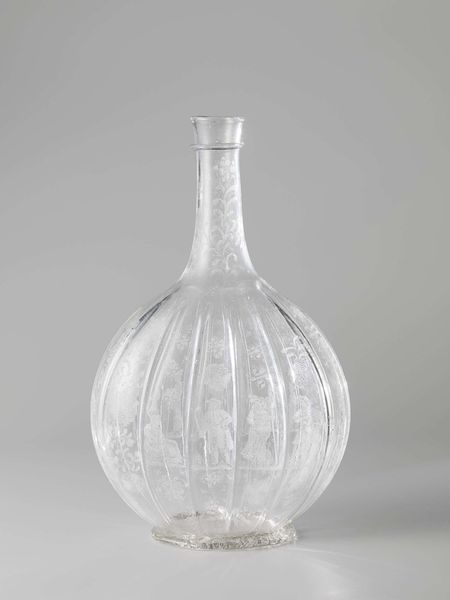
glass
#
baroque
#
glass
#
decorative-art
Dimensions: 9 x 4 5/8 x 4 5/8in. (22.9 x 11.7 x 11.7cm)
Copyright: Public Domain
Curator: Well, here we have a seemingly simple yet surprisingly intricate object: an 18th or 19th-century decanter made of glass. You can currently find it in the Minneapolis Institute of Art. Editor: Immediately striking is its opalescent, almost ethereal quality. The light plays through it, giving it a weighty yet somehow immaterial feel. There’s a certain classicism evident in its form, balanced with elaborate carved baroque-like ornamentation. Curator: Yes, it reflects a sense of aristocratic elegance. Think of the rituals surrounding dining and hospitality, the pouring of wine… Decanters held a certain symbolic value as objects associated with refinement and wealth. Each shared pouring probably served a similar social purpose of creating intimacy. Editor: I agree, the transparency of the material, however, complicates any singular, monolithic reading. It is not about concealing but displaying. The form—the rounded body, the elongated neck—serves primarily to amplify the play of light, thus acting almost like a prism that distorts and refracts light from all directions. Curator: Absolutely. The baroque motifs of curling acanthus leaves suggest a connection to abundance and perhaps hedonistic pleasure. We must remember, even everyday objects could become powerful signifiers. Decanting was probably a public demonstration of one's knowledge about vintages. Editor: But I keep circling back to the basic elements. Look closely at how the glass has been molded, the almost rhythmic repetition of forms in the bulbous base—it suggests that despite its decorative program, functionality, ergonomics even, were never ignored during the original process. The narrow neck of the glass appears suited perfectly for handling in most domestic situations. Curator: I concur. Perhaps what makes it so compelling is this interplay between its practical function and its symbolic role as a carrier of social meaning and, quite literally, liquid luxury. It reminds us of lost gestures associated with convivial gatherings and hospitality in times past. Editor: For me, analyzing the contrast between the material and design makes it worthy of closer study—between transparency and weight, symmetry and flow—it is where these oppositions create something altogether harmonious. A surprisingly complex work.
Comments
No comments
Be the first to comment and join the conversation on the ultimate creative platform.
